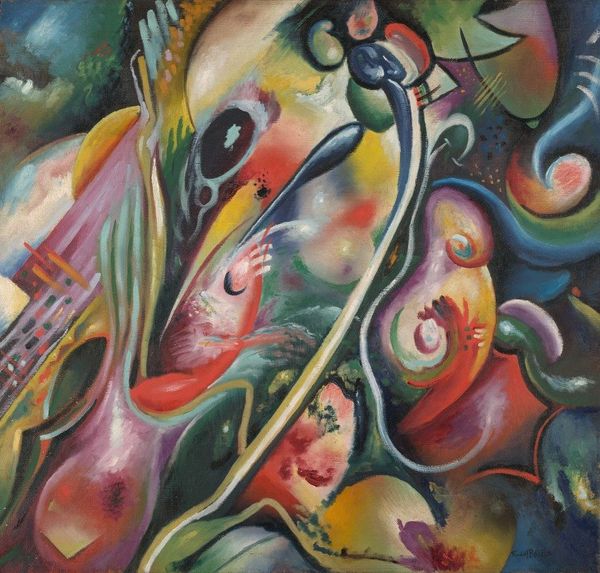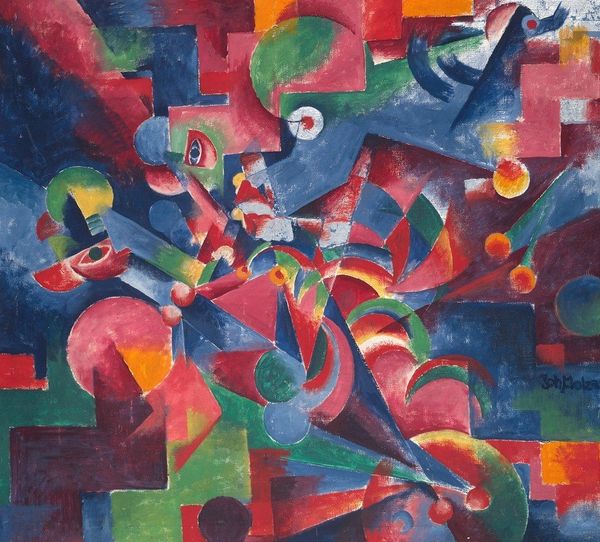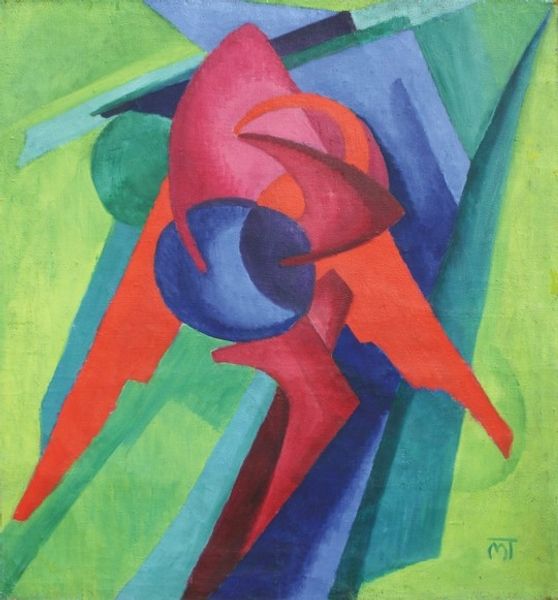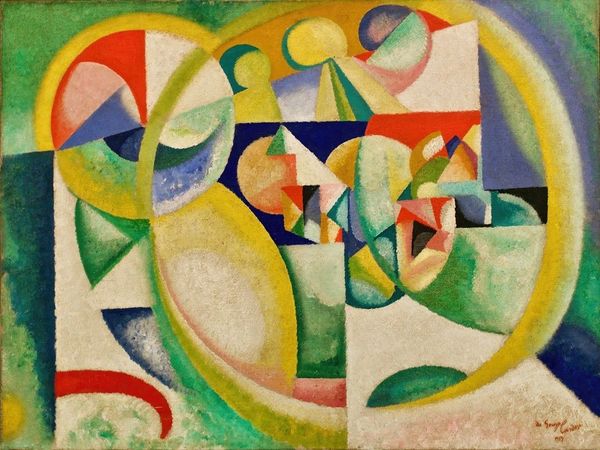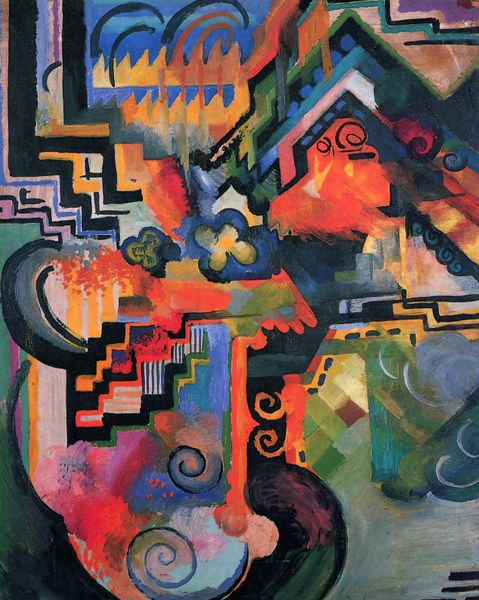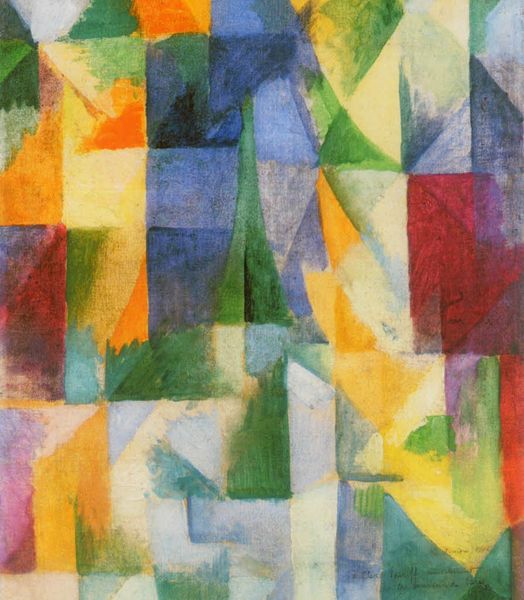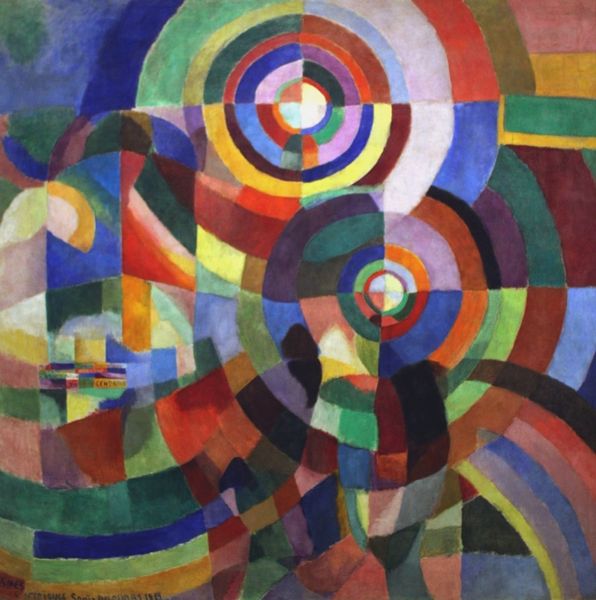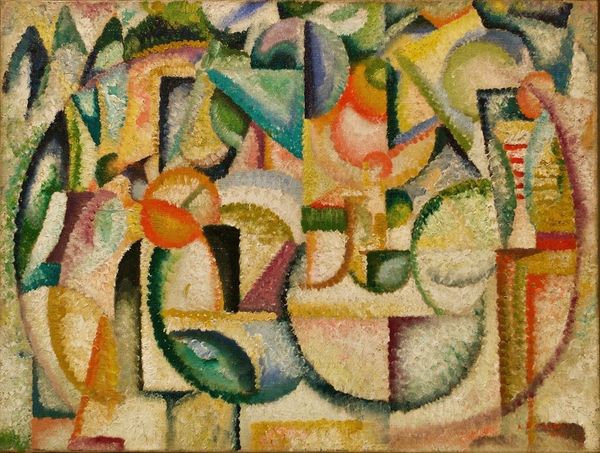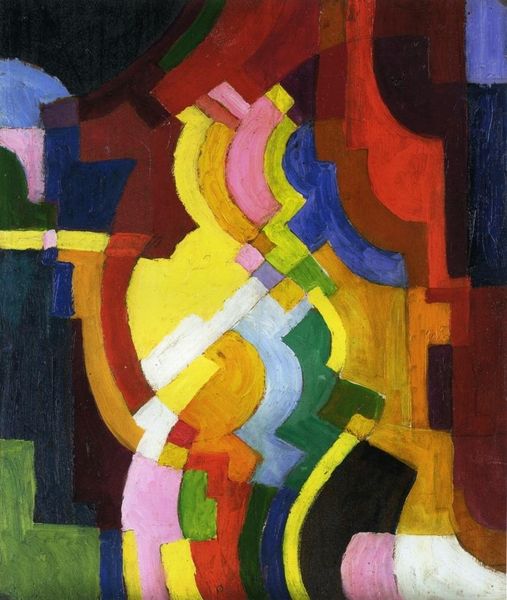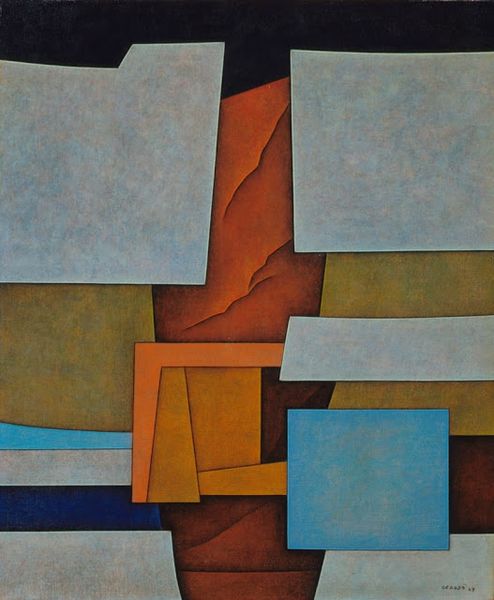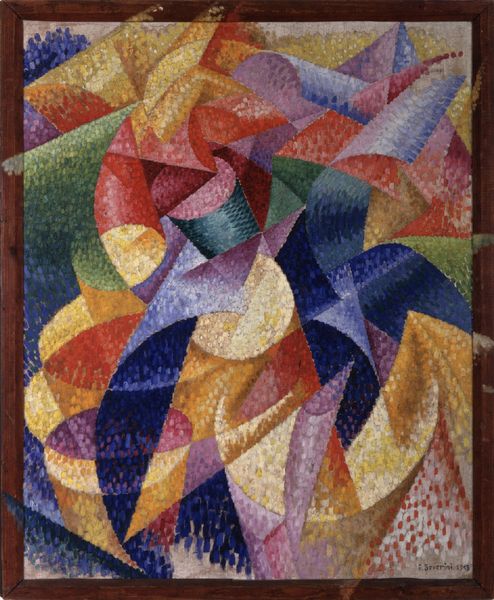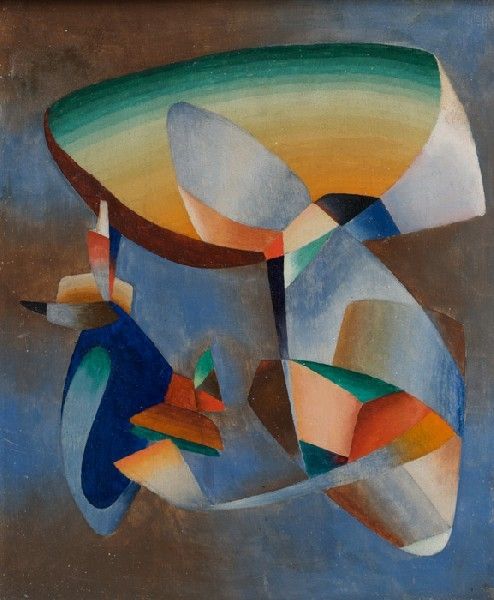
oil-paint
#
art-deco
#
cubism
#
abstract painting
#
oil-paint
#
painted
#
abstract
#
oil painting
#
geometric
#
line
#
modernism
Copyright: Public Domain: Artvee
Curator: Johannes Molzahn’s “Curving Machine,” painted in 1920, employs oil paint to present a compelling vision of modernism, steeped in the geometric language of the era. What’s your initial take on this piece? Editor: It’s… intriguing. The interplay of these curving, almost organic shapes against such a rigidly geometric backdrop creates a powerful tension. I'm struck by its bold colour palette and the smooth gradation of colour; the texture of the oil paint suggests movement. Curator: Absolutely. Consider the sociopolitical backdrop of Weimar Germany. The machine age was rapidly transforming society, generating both excitement and anxiety. Molzahn, deeply involved with Dada and Constructivism, perhaps intended to explore how technology reshaped human experiences and societal structures. The “Curving Machine” becomes less about the literal machine, and more about the impact of progress. Editor: Yes, but let's not dismiss the formal elements at play. The carefully considered arrangement of lines and planes—the interplay of cool blues and greens against warmer reds and browns—creates a harmonious visual rhythm. It is balanced. Curator: But what does this "balance" signify in the face of such societal upheaval? The painting emerged from the same era as Metropolis; and while it avoids overt references to worker alienation, the artwork certainly shows that technological advancement was disrupting older systems of power and representation. This piece can also represent empowerment. Editor: Perhaps. Still, the universality of these forms allows for interpretations beyond that specific context. These geometrical forms evoke semiotic analysis which helps us better comprehend a sense of balance between forms and colours, it makes it universally resonant and deeply beautiful, which are features anyone can respond to anywhere. Curator: Agreed. In its ambiguity and aesthetic accomplishment, the "Curving Machine" manages to transcend time, and encourages dialogues around social issues of progress versus control which continue to echo. Editor: Yes, a powerful synthesis. Regardless of how one approaches it, Molzahn’s exploration leaves the observer to think and respond for years.
Comments
No comments
Be the first to comment and join the conversation on the ultimate creative platform.
